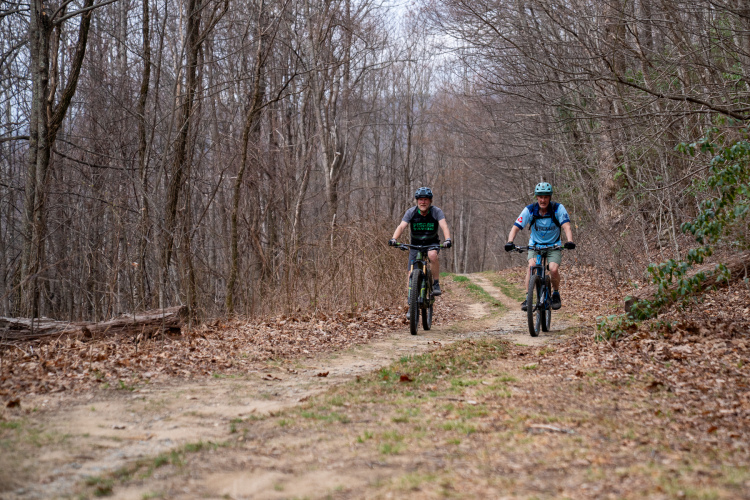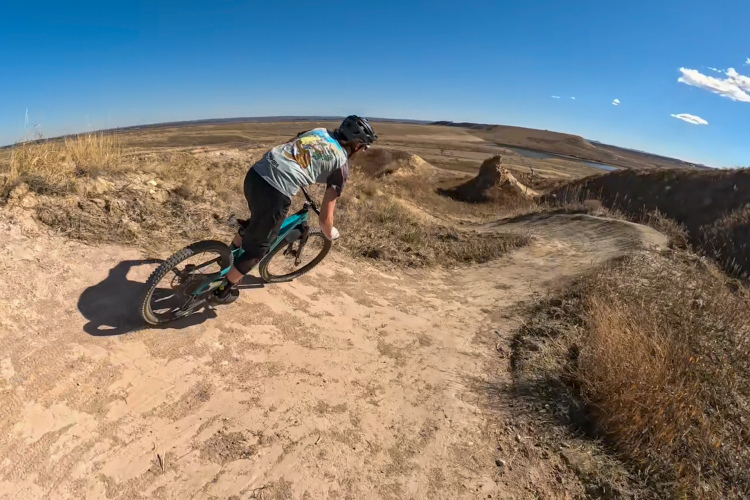It’s 4pm, somewhere in the wilds of La Campana National Park in Chile. I’m with three other people, struggling up a steep mountain road, on the seat of my suddenly-way-too-heavy mountain bike. We are climbing, in our smallest chainrings, to the summit of Cerro El Roble, en-route to what my friend Pancho has promised us is an epic downhill.
The downhill is far from my mind as I gasp for breath in the thin mountain air. In the distance, Mt. Aconcagua, the Americas’ highest peak, laughs at my small misfortune.

Every fibre of my being is screaming in pain. This is one the steepest climbs I’ve ever tackled on my mountain bike. Already grinding for 45 minutes, we’re still just barely past the halfway point of the climb. We’re racing the sun and the daylight, so there’s no time to stop and rest, no option to dismount and walk my steed up the steep gravel.
I want to get off my bike. I want to throw it off the side of the road. I want to turn around and head back to the van (also not an option–it left to meet us on the other side of the mountain). I want to lie down and stop the pain.
Yet I must soldier on. And upward. And through the pain.
After another 15 minutes, I fall into a quiet rhythm. The pain is an ongoing, constant companion, alternately cycling through my lungs, legs and emotions, but I have made an uneasy peace with it. I have accepted its presence, allowed it its space in my life rather than struggling against it; this has lessened the pain’s amplitude to some small degree.
As I near the summit, a mental game ensues: with the goal close at hand, my legs have decided to pack it in early. I engage in a battle of words with my legs to keep them from quitting on me.
A few agonizing minutes later and I’m on the summit. Spectacular views of the coast range fill the westerly view, while to the west Aconcagua nods in acquiescence to my winning battle with pain.

The searing pain of just a few minutes ago becomes a distant memory as we race down the singletrack in the fading sunlight. At the bottom we load into the van and drive to our hotel on the coast. I gaze out the window as the foreign scenery races by and reflect on the intense battle I endured against my pain.
I’ve always seen mountain biking as a metaphor for my life, but I’d never thought so much about pain. Now, looking back on that climb, and the many thousands of times I’ve endured pain–both the pain of a hard climb and the pain of a hard wipeout–on my mountain bike, I think about how that pain has shaped me and helped me grow.
7 Ways (Mountain Bike) Pain Teaches Us Life Lessons
1. Pain forces us to confront our limits.
Pain brings us face to face with truth, with the essential reality of our situation and station in life.
On my mountain bike, the pain of a tough climb is a reminder that I am no longer 20, that I’m not an Olympic athlete. When I overstep my limits on an overly steep section of trail, an overly-skinny skinny, or a drop that’s just a bit too high, I’m usually brought back to earth (literally) hard, and reminded to respect my limits.
Likewise, in life, pain is a wake-up call to remind us that we may have strayed from our authentic life, that we may be pushing ourselves too hard, that we must reset our course.
2. Pain teaches us how to stretch our limits
As we encounter our limits, we also learn how to push and stretch those selfsame limits. By learning the extent of our abilities, we also learn how much further we can push ourselves, and the course to take to get there.
Without reaching our limits, we cannot possibly learn how to exceed them.
3. How we deal with physical pain is a metaphor for how we deal with pain in other areas of our life.
How we approach pain during our mountain bike rides is often reflected in our approach to life. Do you quit when the climb gets a little bit tough? Do you back down from trail challenges? Typically our approach to pain on a mountain bike reflects our approach to pain–and challenge–in our lives.
I taught mountain bike classes in the Don Valley of Toronto for many years. I particularly loved teaching beginners. They typically came into the classes timid and afraid, then over the course of six weeks they would learn how to tackle difficult trail features with confidence. The transformation was often remarkable. This confidence often spilled over into other areas of their lives, and I frequently received letters and emails telling me how this newfound confidence led to a new job, a new relationship, or new opportunities.
4. Pain, when properly applied, makes us stronger.
It’s become cliché to quote Nietzsche’s famous aphorism, “That which does not kill us makes us stronger,” but it’s a cliché that stands the test of time because of its essential truth.
Much like a muscle grows when it is subject to the proper stress–healing slightly stronger when it’s torn via the right exercises–in life we grow most during our times of greatest difficulty.
Enduring pain on my mountain bike makes me a better mountain biker. Whether it’s the pain of pushing myself to complete a climb that I’ve never cleaned before, or the pain of wiping out because I tried a new feature that I’ve never tried before, that pain is a guide to my becoming stronger on my mountain bike (up to a point, of course – see item #1 above).
5. Facing pain head-on reminds us that pain–like joy–is only temporary.
When we’re in the middle of an intense climb, and our legs and lungs are screaming for oxygen, the pain consumes our entire existence. We lose sight of the temporal nature of pain and become temporarily blind, feeling as if it will last forever. Yet the minute we reach the top of the climb, the pain subsides almost immediately.
It’s a good lesson in reminding ourselves of the fleeting nature of pain–and other sensations that we often fall prey to believing are permanent.
Lance Armstrong famously said, “Pain is temporary. It may last a minute, or an hour, or a day, or a year, but eventually it will subside and something else will take its place. If I quit, however, it lasts forever.”
6. With enough practice, you can completely detach from your pain.
In my early 30s, I attended a 10-day Vipassana silent meditation retreat. It’s an intense experience that involves 4:30am wakeups and full days of doing nothing but meditating. Sitting cross-legged all day invokes searing pain throughout one’s body. In Vipassana meditation we learn how to become a neutral, 3rd-party observer to our pain: it’s not easy, but after about eight days I was able to almost completely detach from my pain, and observe it from the outside looking in, instead of feeling the pain as central to my existence. In a strange way, I almost enjoyed the pain and its value as my teacher.
With enough practice, I’m able to apply the same approach to pain while on my mountain bike. As I grind my way up a tough climb and the pain becomes more and more intense, I’m able to reflect, “hey, there’s some pain–interesting,” instead of, “I’m in a lot of pain. I must make it stop!”
It’s a subtle distinction and not an easy one to practice (or explain), but whenever I can detach from pain this way and simply observe it, it makes the experience of the pain much more endurable–and allows me to push myself harder.
7. After pain there is joy.
After every lung-searing climb on my mountain bike, there is always joy: the joy of the summit views, the joy of an amazing downhill, or even the simple joy of the cessation of pain.
That joy is made much more powerful because of the suffering I endured to get there. Likewise in life, my joys are made more potent because of the hardship I endured–either intentional through hard work or unintentional because of unforeseen life circumstances.
Your Turn: How has mountain bike pain been your teacher? What were some of your most painful mountain bike memories? Let me know in the comments below!
About Mike Brcic
Mike is the founder and Chief Happiness Officer at Sacred Rides, the “#1 Mountain Bike Tour Company on Earth” (National Geographic Adventure magazine). Check out the Daily Dirt, their mountain biking and travel blog at http://sacredrides.com/blog
Mike also blogs about and runs courses on entrepreneurship – connect with him on his personal blog, LinkedIn, or Facebook.











3 Comments
Oct 6, 2015
Now, when I look back in life, it was always like that. I'm 45 now and I'm still climbing.
Even today, in "civil life" (out of MTB) when I have some difficulty in life, no matter big or small, I'm telling myself: "It's just a hill, get over it... "
Oct 5, 2015
Oct 9, 2015